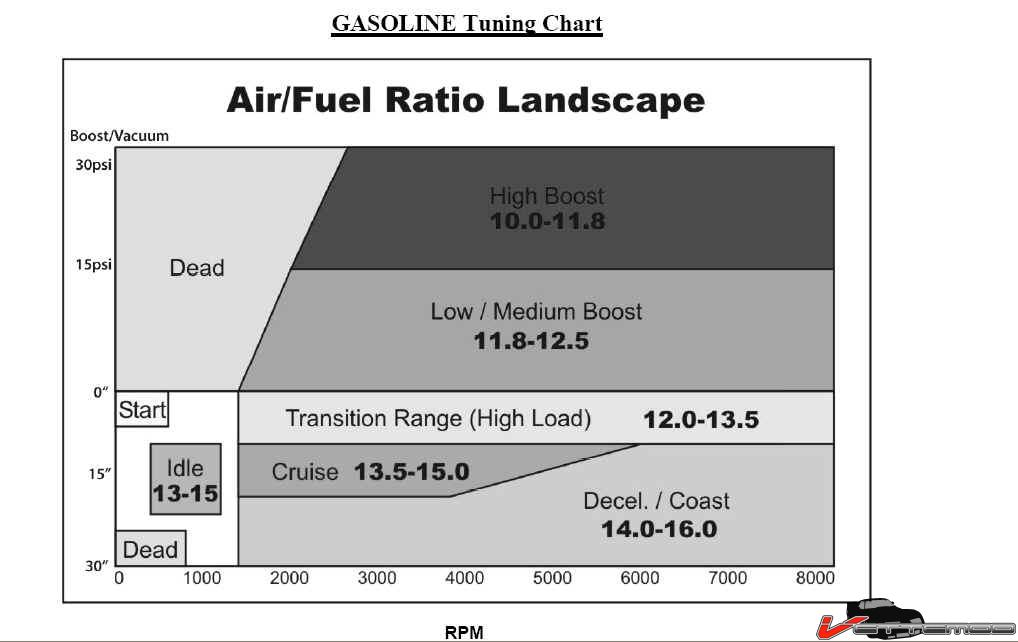emissions
as the engines average power band rpm range increases so does the average power produced
horsepower is calculated with this formula
torque x rpm /5252=hp
example 350 ft lbs of tq at 3000rpm=200 hp
but raise the rpm
example 350 ft lbs of tq at 6500rpm=433 hp
but to raise the rpm levels the cams average duration and usually lift needs to increase to allow far more air flow
as your engines power band increases the cams duration and most likely lift will need to, increase, now the lsa may also narrow in some cases to retain compression
as your cam duration increases and your cams LSA LOBE SEPARATION ANGLE gets narrower, the cams overlap, tends to increase and the intake valves close later in relation to the piston rotation
the change tends to increase low rpm unburnt fuel & exhaust emissions
http://auto.howstuffworks.com/catalytic-converter1.htm
In order to reduce emissions, modern car engines carefully control the amount of fuel they burn. They try to keep the air-to-fuel ratio very close to the stoichiometric point, which is the ideal ratio of air to fuel. Theoretically, at this ratio, all of the fuel will be burned using all of the oxygen in the air. For gasoline, the stoichiometric ratio is about 14.7:1, meaning that for each pound of gasoline, 14.7 pounds of air will be burned. The fuel mixture actually varies from the ideal ratio quite a bit during driving. Sometimes the mixture can be lean (an air-to-fuel ratio higher than 14.7), and other times the mixture can be rich (an air-to-fuel ratio lower than 14.7).
but max power is usually found at a fuel/air ratio closer to about 12.5:1-12.8:1, and the power band and max engine efficiency generally changes with cam timing

viewtopic.php?f=52&t=727
viewtopic.php?f=52&t=480
viewtopic.php?f=50&t=1652&p=3987&hilit=+volumetric#p3987
viewtopic.php?f=52&t=1070
as the engines average power band rpm range increases so does the average power produced
horsepower is calculated with this formula
torque x rpm /5252=hp
example 350 ft lbs of tq at 3000rpm=200 hp
but raise the rpm
example 350 ft lbs of tq at 6500rpm=433 hp
but to raise the rpm levels the cams average duration and usually lift needs to increase to allow far more air flow
as your engines power band increases the cams duration and most likely lift will need to, increase, now the lsa may also narrow in some cases to retain compression
as your cam duration increases and your cams LSA LOBE SEPARATION ANGLE gets narrower, the cams overlap, tends to increase and the intake valves close later in relation to the piston rotation
the change tends to increase low rpm unburnt fuel & exhaust emissions
http://auto.howstuffworks.com/catalytic-converter1.htm
In order to reduce emissions, modern car engines carefully control the amount of fuel they burn. They try to keep the air-to-fuel ratio very close to the stoichiometric point, which is the ideal ratio of air to fuel. Theoretically, at this ratio, all of the fuel will be burned using all of the oxygen in the air. For gasoline, the stoichiometric ratio is about 14.7:1, meaning that for each pound of gasoline, 14.7 pounds of air will be burned. The fuel mixture actually varies from the ideal ratio quite a bit during driving. Sometimes the mixture can be lean (an air-to-fuel ratio higher than 14.7), and other times the mixture can be rich (an air-to-fuel ratio lower than 14.7).
but max power is usually found at a fuel/air ratio closer to about 12.5:1-12.8:1, and the power band and max engine efficiency generally changes with cam timing

viewtopic.php?f=52&t=727
viewtopic.php?f=52&t=480
viewtopic.php?f=50&t=1652&p=3987&hilit=+volumetric#p3987
viewtopic.php?f=52&t=1070
